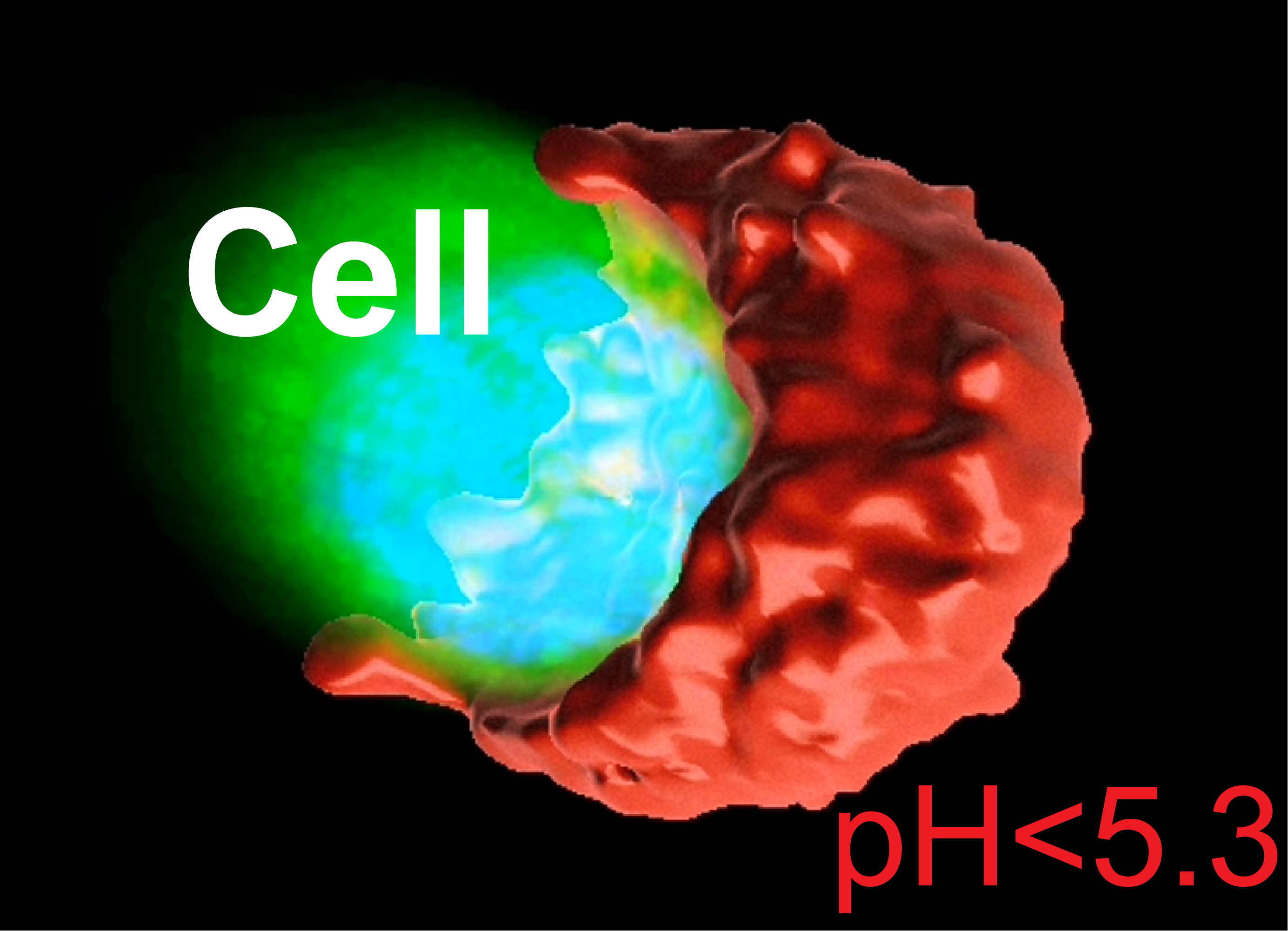Severe Acidity at Single-cell Resolution
Ultra-pH sensitive nanoparticles reveal severe tumor acidity and its impact on immunosuppression
Proton concentration or pH is a fundamental physiological parameter affecting enzyme activity, cell metabolism, and tissue homeostasis. While traditional methods measure pH in large solution volumes, accurately probing pH at high spatial resolution in specific environments, such as the tumor extracellular environment, remains a challenge.
To overcome this, I designed methodologies based on ultra-pH sensitive (UPS) nanoparticle technology, which leverages a signal amplification strategy to detect pH thresholds with a resolution of 0.2 pH units. By incorporating a 3D culture and spraying design, I further enabled sub-micron spatial resolution measurements in both cell cultures and ex vivo patient tumor samples.
A major discovery from this innovation is the identification of severely polarized extracellular acidic region (SPEAR) surrounding cancer cells, where pH falls below 5.3— over 1.5 pH unit lower than previously reported (6.8). This work underscores the success of pegsitacianine, a pH nanosensor with a pH transition at 5.3, which has shown robust detection of various cancers and received Breakthrough Therapy Designation from the Food and Drug Administration.
Additionally, I found that severe acidity induces significant T cell death and T cell exclusion, suggesting it is an underestimated physiological signal in immunosuppression.

Selected Publications
-
Feng, Q.; Bennett, Z.; Grichuk, A.; Pantoja, R.; Huang, T.; Faubert, B.; Huang, G.; Chen, M.; DeBerardinis, R. J.; Sumer, B. D.; Gao, J. Severely polarized extracellular acidity around tumour cells. Nat. Biomed. Eng. 2024, 8, 787. PMID: 38438799.
This study revealed the polarized secretion of lactic acid from cancer cells, identifying a severe acidic pH in tumor microenvironment and its impact on immunosuppression.
-
Feng, Q.; Wilhelm, J.; Gao, J. Transistor-like Ultra-pH-Sensitive Polymeric Nanoparticles. Acc. Chem. Res. 2019, 52, 1485. PMID: 31067025.
This paper summarizes the design principles and applications of ultra-pH-sensitive nanoparticles in clinical and biological research.
-
Bennett, Z. T.; Feng, Q.; Bishop, J. A.; Huang, G.; Sumer, B. D.; Gao, J. Detection of Lymph Node Metastases by Ultra-pH-Sensitive Polymeric Nanoparticles. Theranostics 2020, 10, 3340. PMID: 32194872.
This work demonstrates the imaging of acidity in tumors that have invaded to lymph nodes using ultra-pH-sensitive nanoparticles.